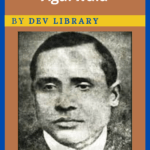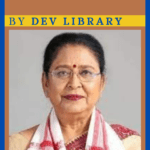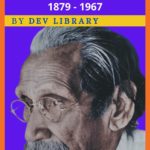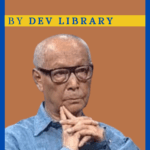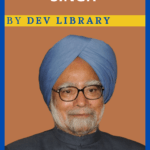Indira Miri made her mark in the society despite various restrictions and problems at a time when the society in Assam was very conservative, when women’s education was not promoted and spread, at a time when child marriage was prevalent in Assam, there was no social acceptance of heterogeneous marriage. Indira Miri, who played an important role in creating a new society by lighting up education in society in parallel with building an identity of herself in society, is a woman with a strong personality.
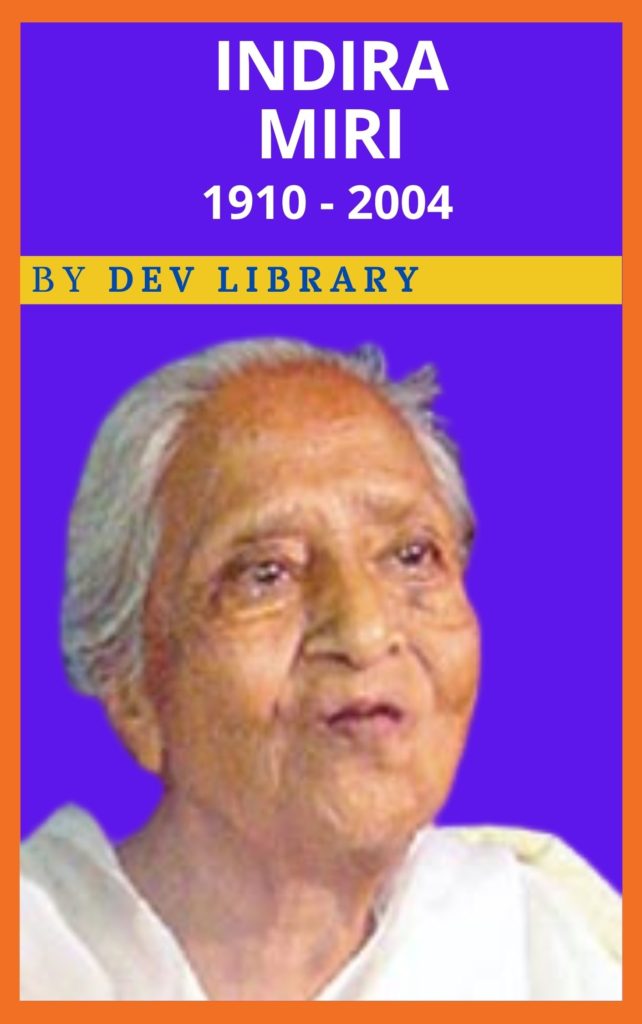
Biography of Indira Miri
| Name | Indira Miri[1] |
| Date of Birth | 1910 |
| Place of Birth | Shillong |
| Farther | Late Rayabahadur Sonadhar Senapati |
| Mother | Divyakanti |
| Education | 1/ Bethune High School in Kolkata 2/ Scottish Church College, Kolkata 3/ Calcutta University 4/ University of A’Dinbarg, USA 5/ Oxford University |
| Awards | 1/ Padma Shri Award (1977) 2/ Shankardev Award (2004) 3/ D. Lit Title (Dibrugarh University) |
| Death | September 5, 2004 |
Early life
Indian women have been playing an important role in the history of the nation at different times, in the development of civilization. One of the most notable names that has been raised is the Assamese women who have played an important role in ushering in a renaissance in the society by gaining high positions in various fields. The acclaimed Indira Miri was a campaign-oriented woman, a man-made, highly educated knowledge devotee, honest brave, an unopposed warrior of life struggle. Karma a Dharma(work is a religion) is the main mantra of Indira Miri’s life who never wants to be promoted and praised for her work. Indira Miri as an educationist wanted to transform society by preventing the degradation of all spheres of human life through education, She believed that education is the strongest tool to transform society quickly.
Indira Miri, who dreamt of transforming society through education, was born in 1910 to a family of a well-to-do family of the Bania community in Shillong. Her fathers name was Late Rayabahadur Sonadhar Senapati and her mother’s name was Divyakanti. Indira Miri’s household(nickname) name is Mereng. Mereng is a khasi name. Indira Miri’s father Sonadhar Senapati was a registrar and freedom fighter and social worker of the Assam Secretariat. Importantly, Indira Miri’s grandfather died on the day she was born. Indira Miri’s father called her Father exchange mother(Pitri binimoyi ma). Indira Miri, who lost her mother at a young age, grew up under the supervision of her father. She received a lot of inspiration from her father Sonadhar Senapati to lead a self-reliant and independent life. Importantly, her father Sonadhar Senapati has always spoken out against women’s education and ill-reforms. Indira Miri enrolled in a Bengali medium school in Shillong (then the capital of Assam) after living in Nagaon, Dhubri etc. due to her father’s job. She later enrolled at Bethune High School in Kolkata at the age of 11. It was from this school that she passed the entrance examination with distinction in 1921 and enrolled in the Scottish Church College in Kolkata and graduated from there. At a time when women’s education was not spread in places like Assam, Women were trapped within the four boundaries of the house, Indira Miri graduated in parallel with men after studying high school living in a Calcutta hostel at that time. After graduating from Scottish Church College in Calcutta in 1932, she gets a First class B.T degree from Lady Kian College in Shillong. Importantly Indira Miri studied in the night section(branch) at Lady Kian College in Shillong due to some personal difficulties. B. T. Indira Miri underwent a six-year training in The Monteshwari Education System in Ahmedabad after passing the exam. She later received a scholarship from the Assam government in 1945 for higher education abroad and studied two-year teacher training (B. Ed) at the University of Edinburgh, Scotland, and took up a teacher training course at Oxford University.
Also Read: Biography of Joyanti Chutia
Work life
Indira Miri was appointed as the top officer in the education department of NEFA (North-East Frontier Agency) i.e. present-day Arunachal Pradesh after returning to India in 1947 after pursuing a teacher training course at Oxford University. However, before starting her career as a top officer in the education department, Indira Miri served as head teacher at Shillong’s Girls High School and as a co-principal at Panbazar High School.
Contribution to society
Importantly, areas like NEFA were deprived of the light of civilization at a time when Indira Miri was appointed as the top official in the NEFA education department. It was a false fantasy to light up education in areas like NEFA. But she gave her full effort to spread the education line among the NEFA people. At that time, she took care to spread the light of education by cutting the nests and fences and setting up schools, despite no provision for transportation to difficult places in the hills for the promotion and dissemination of education. Importantly, there were only three schools in the area when Indira Miri joined NEFA as an education officer but Indira Miri established about 140 schools in NEFA after serving for nearly ten years. Later she served as chairman of the Post Graduate Training Centre set up in Jorhat in 1957 as well as also served as chairman of State Institutions of Education. She also served as principal at Banikanta BT College later after retiring.
Indira Miri husband’s was Mahinchandra Miri. Mahichandra Miri was a resident of Maukhawa village in Dhakwakhana area. Importantly, Indira Miri got married to Mahinchandra Miri in 1932 when there were various roots in the name of caste discrimination in the social life of Assam, the social system was very conservative in terms of marriage and religious reforms were emphasized in marriage. Importantly, the first science stream graduate of the missing tribe was Mahichandra Miri. He was also a senior forest department official by profession. But unfortunately, just seven years after marriage, in 1939, Mahinchandra Miri, an extraordinary talented personality, died of a deadly fever and died at a young age. Even after premature widow she was not upset about three-year-old son, one-and-a-half-year-old daughter and three-month-old unborn child. Instead she faced every challenges bravely. Importantly Indira Miri joined NEFA as an education officer after pursuing higher education during the challenging period.
Importantly, social activist Indira Miri has served as an education officer besides serving as an education officer Chairman of the Social Welfare Board, Principal of Kanya College, Member committee constituted to elect vice chancellor of executive council of Dibrugarh and Guwahati University, Assam Red Cross Society, Srimanta Shankar, a life member of Kristi Vikas Sangha set up at Guwahati Paltan Bazar, member of governing body of JB law college and Handique girls college, Member of the Illiteracy Elimination Committee under the Department of All India Adult Education, Along with holding the post of Chairman of Guwahati Public School and Jalukbari Children’s House for many years, The India’s Scout and Guides and also served as Deputy Chairman of Assam Branch, member of Assam terminology committee.
Indira Miri as a Server
Apart from these Indira Miri also had a natural quality of her elocution. Indira Miri, who was fully occupied in English, Assamese, Bengali, also had etymology in Sanskrit. Indira Miri, who was honoured in the public community as the leading educationist of Assam, was honoured with the country’s fourth civil honour – ‘Padma Shri’ by the Government of India in 1977. She was also awarded the ‘Shankardev Award’, the highest honour of the Assam government, in 2004. On the other hand, she also received the prestigious D Lit title from Dibrugarh University. Indira Miri, who set a shining example in the field of women’s empowerment through women’s education and the removal of social untouchability through heterosexual marriage, commemorated death on September 4, 2004.
Conclusion
Indira Miri, in the society surrounded by patriarchal thought is a symbol of ideals and courage for every Assamese woman. From the beginning of the nineteenth century to the 20th century, Indira Miri accepted a lifelong sacrifice to create a modern society by freeing Assamese society from caste discrimination and freeing women from the four walls of the house. She was also a successful mother. Indira Miri who moved forward in various adverse conditions of life is a symbol of ideals and pride for the entire Assamese society.
FAQ
1. When and where was Indira Miri born?
Ans: She was born in 1910 at Shillong, Assam, India.
2. What is the nick name of Indira Miri?
Ans: Nick name of Indira Miri is Mereng.
3. What is the full form of NEFA?
Ans: The full form of NEFA is North East Frontier Agency.
4. When did Indira Miri was honoured with Padma Shri Award?
Ans: She was honoured with the country’s fourth civil honour – ‘Padma Shri’ by the Government of India in 1977.
5. When she was awarded with Shankardev Award?
Ans: She was awarded with ‘Shankardev Award’, the highest honour of the Assam government, in 2004.
6. From where did she received D Lit title?
Ans: She received the prestigious D Lit title from Dibrugarh University.
7. When did she died?
Ans: She died in September 5, 2004.

Hi, I’m Dev Kirtonia, Founder & CEO of Dev Library. A website that provides all SCERT, NCERT 3 to 12, and BA, B.com, B.Sc, and Computer Science with Post Graduate Notes & Suggestions, Novel, eBooks, Biography, Quotes, Study Materials, and more.


